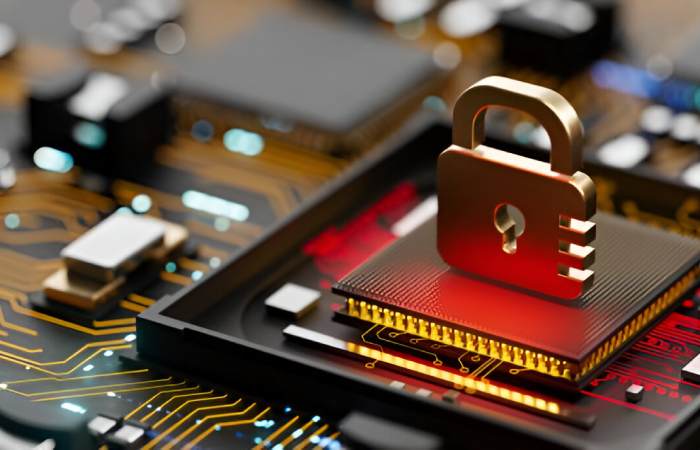In today’s technology-driven world, cybersecurity often revolves around tools like firewalls, encryption, software updates, and password protection. While these elements play a critical role in protecting digital systems. A crucial but often overlooked aspect lies in the hardware itself: printed circuit boards (PCBs). These compact yet vital components form the backbone of virtually all electronic devices and play an increasingly important role in maintaining system integrity and preventing security breaches.
This article will examine PCBs in Cybersecurity critical role in cybersecurity and how secure hardware design has become an essential defence against ever-evolving cyber threats.
What Are Printed Circuit Boards (PCBs)?
Printed circuit boards (PCBs) are flat, rigid platforms used to physically support and electrically attach electronic components using conductive tracks, pads, and other elements, typically made of copper. They form the basis of virtually all modern electronic devices, including smartphones, laptops, servers, routers, military systems, and industrial control equipment.
While their primary function is to ensure smooth communication between components such as microprocessors, memory modules, and power supplies, PCBs in Cybersecurity have also become a key element in hardware-based cybersecurity.
Why PCBs Matter in Cybersecurity?

While most cybersecurity strategies focus on software solutions, today’s increasingly sophisticated cyber threats also target hardware vulnerabilities. These low-level exploits can bypass even the most robust software defences, making it critical to protect the physical foundation of electronic systems, starting with the printed circuit board (PCB).
Below are four key reasons why PCBs play a vital role in cybersecurity:
1. Hardware Root of Trust (HRoT)
A secure system starts at the hardware level. Critical elements such as security chips, encryption modules, and secure boot processes are integrated directly into the circuit board. These components ensure that only verified and trusted software is loaded when the system is turned on. Providing the necessary protection against threats such as rootkits and malware.
Without a well-designed PCBs in Cybersecurity to implement these functions, the fundamental reliability of the system can easily be compromised.
2. Tamper Detection and Resistance
Printed circuit boards in high-security sectors such as defense. Banking, and healthcare are often designed with tamper-resistant technologies. These may include protective materials, physical shielding, or self-destruct features that erase data or turn off the device if unauthorised physical access is detected.
These security measures cannot be implemented solely through software and require special development at the hardware level.
3. Firmware protection
Firmware (embedded code that controls hardware behaviour) resides in memory chips soldered to the printed circuit board. If compromised. This low-level code can serve as a hidden entry point for malware. Attackers can exploit vulnerabilities in the manufacturing process or through direct physical access to install undetectable malicious firmware.
Printed circuit boards must be manufacture using strict security protocols, encrypted firmware storage, and supply chain controls to prevent this.
4. Ensuring Supply Chain Security
Since electronic products are manufactured within global supply chains. PCBs are exposed to risks such as unauthorised hardware modification, counterfeit components, or hidden backdoors installed during manufacturing. These risks can be activated remotely to steal data or disrupt operations.
Maintaining supply chain integrity is critical and involves using trusted suppliers, inspecting all components, and implementing traceability measures throughout the PCB manufacturing process.
How PCB Design Enhances Cybersecurity?
Security can be built right into the PCB design. Here’s how innovative design can help ensure robust cybersecurity:
- Isolated Circuitry for Sensitive Components
- Sensitive modules such as encryption chips. Security keys, or authentication processors are located in isolated board segments to limit unauthorised access through side-channel attacks.
- Shielded Traces and Layers
- Signal traces carrying sensitive data can be protect using shielding and multilayer PCBs to prevent electromagnetic leakage, eavesdropping, and interference.
- Dedicated Security Coprocessors
- Integrating a dedicated chip for cryptographic operations (such as a TPM or HSM) directly into the PCB provides a powerful layer of authentication and data encryption protection.
- Access Control and Monitoring
- Some PCBs contain built-in monitoring circuitry that monitors voltage, temperature, or physical conditions. Deviations may indicate unauthorised access attempts or hardware failures that require immediate attention.
Challenges and Considerations
Integrating cybersecurity into PCB design is essential, but it comes with its own set of challenges:
Increased Costs
Incorporating security features into PCB designs often increases complexity and manufacturing costs. Despite this. The financial and reputational damage caused by a cyber-attack often far exceeds the initial investment in developing secure hardware.
Lack of Standardisation
There are currently no globally accept standards in the hardware security field. This makes implementing uniform security measures across industries and manufacturers difficult, leading to inconsistencies in protection levels.
Knowledge and Awareness Gaps
Security is still often ignored in the early stages of hardware development. Many engineers prioritise performance, form factor, or cost over security. Bridging this gap requires a cultural and educational shift: security must be a key consideration from the beginning of the design process.
Future of PCBs in Cybersecurity
Secure-by-default hardware is becoming critical with the rapid growth of edge computing, artificial intelligence devices, and the Internet of Things (IoT). In this ever-changing landscape, printed circuit boards will move beyond their traditional role to become active cybersecurity tools. Here’s how:
Integrated AI-powered security monitoring
Future print circuit boards will be equipped with AI to monitor device behaviour in real time to detect anomalies such as unusual power consumption. Data patterns, and potential signs of hacking or cyber-attacks.
Benefit: Real-time threat detection and response at the hardware level.
Blockchain-Verified Manufacturing
Blockchain will record every step of PCBs in Cybersecurity production, ensuring transparency and authenticity. This will help prevent component counterfeiting and unauthorised modifications.
Benefit: Secure and tamper-evident hardware supply chains.
Quantum-resistant encryption modules
To prepare for future quantum threats, printed circuit boards will contain encryption chips designed with quantum-safe algorithms that protect critical data from next-generation attacks.
Benefit: Long-term security in the post-quantum era.
Self-healing and recovery capabilities
Advanced circuit boards will incorporate self-healing circuitry that can isolate damaged areas. Redirect data, or automatically restore system stability during an attack.
Benefit: Increased system resilience and reduced downtime.
Conclusion
Cybersecurity is no longer just a software issue, but a hardware imperative. Printed circuit boards, the unsung heroes of any electronic system, have evolved from simple structural components to fundamental system security elements.
Designing secure printed circuit boards, controlling the manufacturing process, and integrating protection mechanisms directly into the hardware are essential for creating systems resilient to today’s aggressive digital world.
In an era where the lines between the physical and digital worlds are increasingly blur. Cybersecurity begins not in the cloud, but on the printed circuit board.

